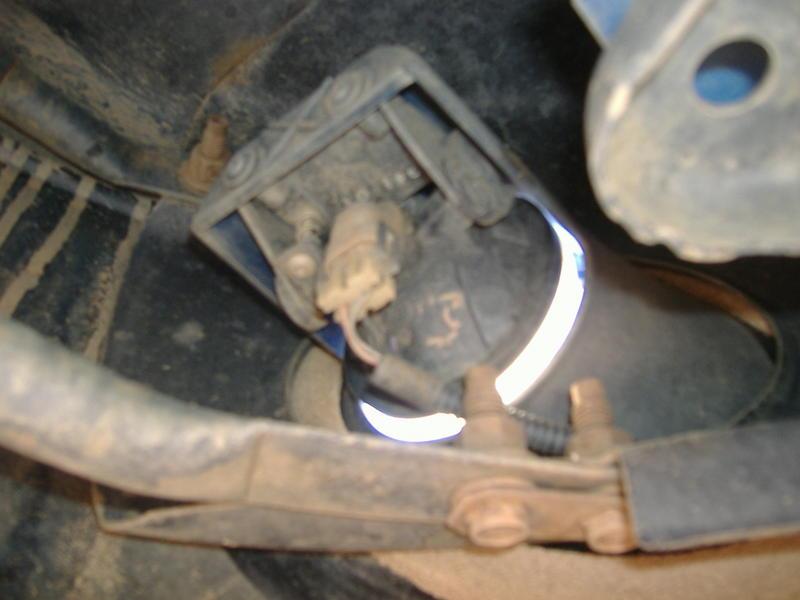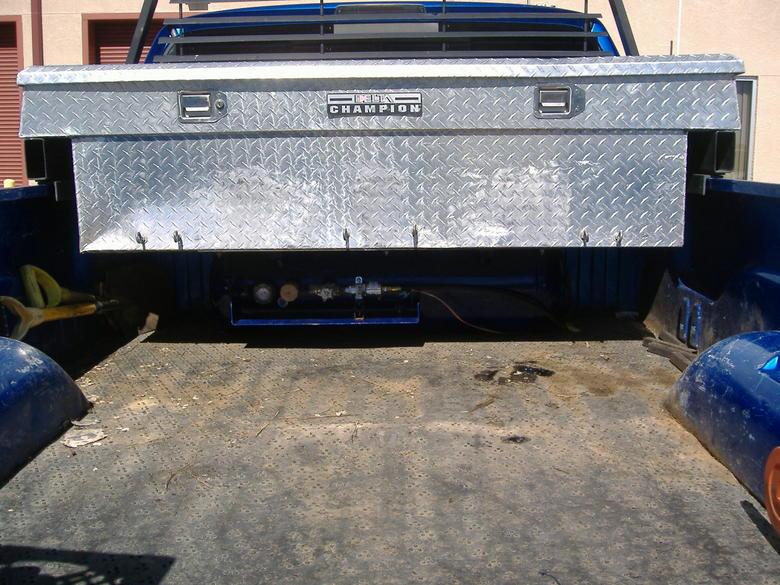Everything posted by stodg73
-
chop saw abrasive blades
You might try the metal suppliers, they usually have take off blades that they can't use any more. I had a box of about 40 that I got from one company. Most were about 11 inches in diameter.
-
Anyone good at math?
I will attempt to recalculate the numbers with the new info of 1280:1 with HFRR of 470, to see what happens and if there is any change.
-
Brake Light?
The seatbelt light on mine comes on and off. There is a sensor in the buckle that gets messed up, dirty. To see if it is the buckle, push the metal into the buckle and see if that turns it off. I think there was a recall on them a long time ago.
-
Anyone good at math?
Correct 1oz to 1 gal. = 128:1. Easy math.Use the same number of gallons pumped for number of ounces. What you are looking for is a HFRR below 450, this is per the Bosch study. The calculations that I did indicate that the HFRR with 2 stroke is about 383, with 128:1. This translates to very easy math. To get to 450HFRR, you can use 175:1 which uses lots of math. From what I understand, anything below 100:1 is not helping the engine any, and it may be harmful. Just remember that this is in theory.
-
Anyone good at math?
Ummmmm, let's see!!!!!! Gonna make it slicker, and not waste $$. :smart:Don't use too much slickum', more $$ gone. :smart:More $$ gone, no upgrades!! :cry:
-
Anyone good at math?
I used the calc program to compare to mine and got similar results. All in theory....... I am unable to purchase the HFRR testing gear, due to monetary constraints, i.e. I can't even pay attention:lmao:.
-
Anyone good at math?
I am using the Diesel Place numbers because they are known. I am using your ratio calculator to find the numbers. I have done similar calculations and came up with similar numbers. In order to get under the 450 HFRR the mix needs to be about 173:1. At 128:1 the value is 383 HFRR. Now, using ~520 HFRR as the baseline, and using Diesel Place's formulary, using the knowns of 636 HFRR/0 and 474 HFRR/200:1 to infer all other numbers, a ratio of 500:1 gets a 455 HFRR with my calculations. Extrapolating from that, at 128:1 would be about 267 HFRR. So, if I went to running 256:1 ratio, i.e. 1 gal : 0.5 oz, 2 gal : 1 oz, or 32 gal : 16 oz, the number would be about 393 HFRR. Still below what is recommended.Still using the ~520 HFRR, the 200:1 would be about 358 HFRR. I am inferring that anything below 60:1 ratio is not better for the engine, i.e. does not help. [ATTACH]2069[/ATTACH] Now, according to this graph, the ideal mixture is 175:1, at a HFRR of 636. This brings the HFRR to 450.4555556 or 451. And according to the Bosch study, 450 is acceptable. Please remember this is all in theory, I will be resting for a few, my brain is strained. I enjoy the ease of 128:1, i.e. # of gallons = # of ounces of 2 stroke. 2 Stroke graph 33.xlsx
-
Anyone good at math?
Does anyone know the HFRR of 2 stroke oil itself and not in combination with diesel fuel. Also, what is the best HFRR for our trucks?
-
Lift Pump Recommendations?
Most will recommend a Rator, FASS, Airdog. Here is a a couple of links for some. http://shop.ebay.com/?_from=R40&_nkw=airdog%20raptor%20fuel%20system%20cummins%20150%20gph&_sacat=See-All-Categories&_trksid=m194&ssPageName=STRK:MEFSRCHX:SRCH http://shop.ebay.com/?_from=R40&_nkw=dodge%20ram%20external%20fuel%20pump&_sacat=See-All-Categories&_trksid=m194&ssPageName=STRK:MEFSRCHX:SRCH The first is a Raptor, the second is an airtex, just a step above stock. The airtex will buy you time to get a better pump. Then you will have a backup if you ever need one.
-
Some quick internet research on Propane Injection and Water/Methane injection. (Long)
The problem most have is the DOT approved tanks that have to be filled. These are mounted in/on the truck solidly, usually between the frame rails for protection. Rburks is right, sometimes the propane distributor doesn't have long enough hoses to fill the tank on the truck, or the fill station is inaccessable to the big rigs. They do have remote fill hoses that you can purchase to relocate the fill point, yet they can only go so far. When I go to have mine filled, the hose that they use is barely long enough.
-
02 sport fog light wiring
Some pictures of mine, 01.5 Sport wiring loom on the underside of the bumper. Mine is made up of 2 different looms, the first is the one between the lights themselves and the to the connector in the middle. Connector at the light, drivers side. Connection between the sport lights and main wiring loom. You can see the steering gear so you might be able to find the connection.
-
Some quick internet research on Propane Injection and Water/Methane injection. (Long)
The propane might ignite from the grid heaters, I am not sure as I have not had this happen, the reason is that the propane is not available until boost/psi is built. This is a safety feature built in the system. There is a Hobbs pressure switch, set at 4 psi, that electrically controls the flow of propane through a solenoid. When you first start your truck, there is no boost available so the Hobbs switch is open/off(open circuit). When you develop boost, the Hobbs switch closes/on(closed circuit), 12 volt power flows to the electric solenoid(off-closed/on-open) that is attached to the propane regulator and propane is released into the intake. What this means is that you have to be making a minimum of 4 psi of boost before the propane is released. I added a second fuel cut-off solenoid at the tank for safety reasons also. This solenoid is hard mounted to the tank, via steel clamp and grade 8 bolt.
-
Some quick internet research on Propane Injection and Water/Methane injection. (Long)
SASQCH, answers are in red, I think. ISX, I have 2 electric solenoid valves on the system, one is at the tank that turns on with the key and main propane switch. The second one is at the propane regulator that is turned on by a Hobbs pressure switch, which is mounted to a boost bolt, and activated by boost pressure. There is no leakdown due to the fact that you are using a gas instead of a liquid. When I was testing the system, I would push the override button, and the engine would smooth out considerably.
-
Some quick internet research on Propane Injection and Water/Methane injection. (Long)
To me, it is totally worth it. I was filling up with diesel evey week and now I am filling up about every 3 weeks, and filling up with propane about every 6-8 weeks, depending on usage. I have towed heavy with mine and it helped alot. I towed about 13,000 lbs about 200 miles and got 15 mpg at 60 mph. I did this on 2 different occasions. After doing this, I had to fill the propane tank up, and refueled the truck 2 times. The more boost, the more propane you use, and yet, the more power you make.
-
Some quick internet research on Propane Injection and Water/Methane injection. (Long)
Currently, it went up about 5-6 mpg. I went from 14.5 to 20-21 mpg. Now, I get this mileage at 78 mph, with the cruise set. If I use my right foot, the mileage gets worse. I have done the same route several times and the mileage stays about the same.
-
Some quick internet research on Propane Injection and Water/Methane injection. (Long)
If you have more questions, I will be glad to answer them. With my system, I roughly calculated that I have to use it for about 10,000 miles before it starts to pay for itself. The propane also increased my mileage from 14.5 to anywhere between 21 to 24 mpg with use. I have mine set for mileage. It comes on at about 2 lbs of boost and starts increasing power/mileage from there. I did a 1000 mile trip when I first put in the system and I got about 28 mpg going and about 20 mpg coming back with a flat faced 12 ft trailer. I went from Colorado to Kansas and back. The cost per mile was about 16.9 cents, and this includes the cost of both fuels. I also have some extra safety built into my system, for my peace of mind. I have an extra fuel cutoff solenoid mounted solidly at the tank, that will shut the fuel off if the tank becomes separated from the truck.
-
Some quick internet research on Propane Injection and Water/Methane injection. (Long)
I have been using propane for the past 8 months. I have mine set for about 3 tanks of fuel to 1 tank of propane. My propane tank is 12 gallons. The kit that I used is from Ebay, and cost about $300, with a total cost of $500 for everything. I did the install myself. The setup depends on what you want it for, power or mileage. I have found that if diesel is below $3.00 a gallon it is not worth using everyday, only for towing. Also, if propane is about about $2.50 per gallon it is not worth it either. Due to the use of 2 different fuels. With propane you have to worry about predetonation. This will blow head gaskets with the increased pressures. The propane also advances the timing of the engine, so if you are using a timing box, you need to be very careful.






